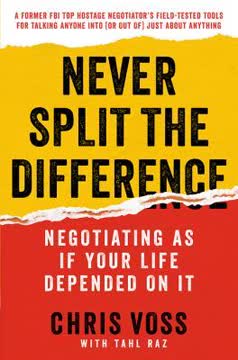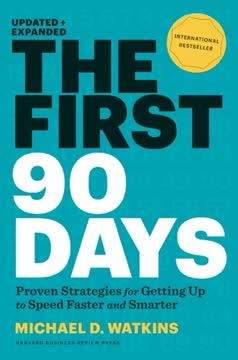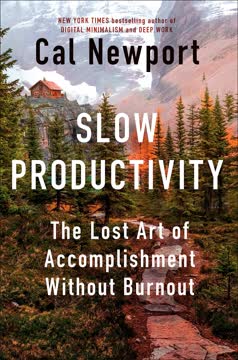نکات کلیدی
۱. پذیرش نگرش رشد برای مربیگری مؤثر
«انتظارات پایین به ندرت منجر به رشد میشوند و اغلب هر دو طرف را دچار ناامیدی میکنند.»
طرز فکر خود را تغییر دهید. بهعنوان یک مربی، نگرش رشد را بپذیرید که فرض میکند کارکنان شما توانایی یادگیری و پیشرفت دارند. این نگرش برای مربیگری مؤثر حیاتی است، زیرا پایهای برای بهبود فراهم میکند و به شما امکان میدهد پتانسیلها را جایی ببینید که دیگران محدودیت میبینند.
تعصبات خود را بشناسید و بر آنها غلبه کنید. از ترجیحات و تعصبات خود آگاه باشید که ممکن است مانع توانایی شما در مربیگری مؤثر شود. از ناامیدی بهعنوان راهنمایی برای شناسایی این تعصبات استفاده کنید و از همکاران مورد اعتماد بازخورد بگیرید تا دیدگاهی عینیتر به دست آورید.
مهارتها را به نیازهای کلان مرتبط کنید. به کارکنان خود کمک کنید تا درک کنند توسعهشان چگونه با اهداف سازمانی همسو است. این رویکرد به آنها حس هدفمندی و انگیزه برای رشد میدهد. با پرسیدن سوالاتی درباره نقاط قوت، علاقهمندیها و چالشهایشان، مربیگری خود را به گونهای چارچوببندی کنید که رشد شخصی آنها را به اهداف شرکت پیوند دهد.
۲. فراهم کردن زمینه برای عملکرد برتر از طریق انتخاب درست وظایف
«تقاطع این سه عنصر، میدان جادویی را ایجاد میکند که در آن برتری مستمر ممکن میشود.»
وظایف مناسب را انتخاب کنید. به کارکنان کمک کنید تا عملکرد برتر داشته باشند با انتخاب وظایفی که:
- در آنها مهارت دارند
- انجام آنها را دوست دارند
- به پروژه یا سازمان ارزش میافزایند
محیطی حمایتگر ایجاد کنید. ارتباط میان کارکنان، وظایفشان و مأموریت سازمان را تقویت کنید. این حس ارتباط، وفاداری، هیجان و تمایل به مشارکت را افزایش میدهد.
ارتباطات مثبت را ترویج دهید. کارکنان را تشویق کنید که:
- بهعنوان افراد شناخته شوند
- به درخواستهای توجه همکاران پاسخ دهند
- بهطور منظم قدردانی خود را ابراز کنند
۳. ایجاد اعتماد از طریق گوش دادن فعال و رفتار شفاف
«بدون اعتماد، کارکنان با شما صادق نخواهند بود؛ در بهترین حالت، شما فقط نیمهحقیقتها یا نادرستیهایی درباره دیدگاه آنها نسبت به خود و نقششان در سازمان خواهید شنید.»
اولویت دادن به ایجاد اعتماد. ایجاد اعتماد را بهعنوان اولویت اصلی خود بهعنوان رهبر قرار دهید. بدون اعتماد، کارکنان درباره اهداف، نقاط ضعف یا حوزههای رشد مورد نظر خود صادق نخواهند بود.
گوش دادن فعال را تمرین کنید. از روشهای زیر استفاده کنید:
- توجه کامل داشته باشید و تماس چشمی راحت برقرار کنید
- نشانههای غیرکلامی را مشاهده کنید
- آنچه میشنوید را تأیید کنید
- احساسات را بازتاب دهید بدون موافقت یا مخالفت
- برای اطمینان از درک، بازگو کنید
- نکات کلیدی را خلاصه کنید
در رفتار خود شفاف باشید. رفتاری را که از کارکنان انتظار دارید، خودتان نشان دهید. درباره تصمیمات سخت و بازخوردها صادق باشید، توضیحات واضح ارائه دهید و پذیرای سوالات باشید.
۴. ساختاردهی جلسات مربیگری برای بیشترین تأثیر
«جلسات مربیگری گفتگوهایی میان شما و کارمندتان است که در آنها حوزههای رشد شناسایی، برنامههای توسعه ایجاد، تمرینها انجام و پیشرفت بررسی میشود.»
بر سر نتایج توافق کنید. هر جلسه مربیگری را با تعیین اهداف و انتظارات روشن آغاز کنید. کارمند خود را تشویق کنید تا در تعیین دستور جلسه و اهداف مشارکت کند.
درک پایهای بسازید. از ارائه راهحل فوری خودداری کنید. بهجای آن، سوالات باز بپرسید تا اطلاعات جمعآوری کرده و دیدگاه کارمند را درک کنید.
آینه را نگه دارید و بازتعریف کنید. بازتابی از آنچه شنیدهاید ارائه دهید، به کارمند کمک کنید وضعیت را از زوایای مختلف ببیند و مهارتها یا نگرشهای جدید را تمرین یا نقشآفرینی کند.
پایان قابل اقدام تضمین کنید. هر جلسه را با این که کارمند آنچه آموخته و اقدامات بعدی خود را بیان کند، به پایان برسانید. بر سر گامهای بعدی و زمانبندی آن توافق کنید.
۵. ارائه بازخوردی که ماندگار باشد با اجتناب از واکنشهای تهدیدآمیز
«وقتی افراد درگیر واکنش تهدید هستند، کمتر قادر به دریافت و بهکارگیری بازخورد هستند.»
روابط را پرورش دهید. با گذشت زمان ارتباطات خود را با کارکنان تقویت کنید تا احتمال ایجاد واکنش تهدید در گفتگوهای بازخورد کاهش یابد.
احساسات را مدیریت کنید. به اندازه کافی احساسات خود را ابراز کنید تا طرف مقابل درگیر شود، اما واکنش خصمانه یا دفاعی ایجاد نکنید. میزان مناسب بسته به موضوع، رابطه و زمینه متفاوت است.
منصفانه رفتار کنید. بازخورد را بر احساسات خود نسبت به رفتار متمرکز کنید و از اشاره به انگیزههای طرف مقابل خودداری کنید. این رویکرد که «در زمین خود بازی کردن» نامیده میشود، خطر فرضیات نادرست و واکنش دفاعی را کاهش میدهد.
زمینه را فراهم کنید. به جزئیات لجستیکی مانند زمان، مدت، مکان فیزیکی و نزدیکی توجه کنید تا محیطی مناسب برای گفتگوهای بازخورد سازنده ایجاد شود.
۶. تطبیق مربیگری با سبکهای یادگیری و سطوح عملکرد فردی
«با بهرهگیری از سبکهای ترجیحی آنها، عمیقتر درگیرشان میشوید و انگیزهشان را افزایش میدهید. در نتیجه، پیشرفت بیشتری و سریعتری به سوی اهداف خود خواهند داشت.»
سبکهای یادگیری را شناسایی کنید. نه سبک یادگیری را بشناسید:
۱. آغازگر
۲. تجربهکننده
۳. خیالپرداز
۴. تأملکننده
۵. تحلیلگر
۶. متفکر
۷. تصمیمگیرنده
۸. عملکننده
۹. متعادلکننده
رویکرد خود را تطبیق دهید. روشهای مربیگری خود را با سبک یادگیری ترجیحی هر کارمند هماهنگ کنید. این سفارشیسازی باعث افزایش مشارکت و انگیزه شده و پیشرفت سریعتر را به دنبال دارد.
مربیگری سطوح مختلف عملکرد. استراتژی مربیگری خود را بر اساس نوع کارمند تنظیم کنید:
- ستاره (بازیکن A): زمان بیشتری صرف کنید، تحسین واقعی ارائه دهید و مسئولیتپذیری در همکاری را از آنها بخواهید
- پایدار (بازیکن B): آنها را همانگونه که هستند بپذیرید، مشارکتهایشان را بشناسید و فرصتهای رشد در محدوده راحتیشان فراهم کنید
- درگیر مشکل (بازیکن C): برنامه بهبود واضحی ایجاد کنید، بازخورد صادقانه و بهموقع بدهید و شبکه حمایتی فراهم کنید
۷. مربیگری مدیران تازهکار برای توسعه بلوغ عاطفی
«قرار دادن این مدیران کمتجربه در موقعیتهای قدرت خیلی زود، فرصت توسعه مهارتهای عاطفی که با زمان و تجربه به دست میآید را از آنها میگیرد.»
اهمیت بلوغ عاطفی را بشناسید. درک کنید که با پیشرفت مدیران، مهارتهای نرم رهبری اهمیت بیشتری برای موفقیت پیدا میکند.
استراتژیهای توسعه را اجرا کنید:
- بازخورد ۳۶۰ درجه را عمیقتر کنید
- روند صعود را متوقف کنید (واگذاری نقشهای بینوظیفهای)
- به تعهد خود به توسعه عمل کنید
- توسعه شخصی را نهادی کنید
- شبکههای غیررسمی را پرورش دهید (مثلاً مربیگری)
صبور و پیگیر باشید. توسعه مهارتهای عاطفی نیازمند زمان، تمرین و تعاملات مستمر است. از ارتقای زودهنگام مدیران مستعد خودداری کنید.
۸. پرورش مهارتهای خودمربیگری در کارکنان
«با کمک به کارکنان برای مربیگری خود، میتوانید رهبر و مدیر مؤثرتری باشید.»
نگرش رشد را ترویج دهید. کارکنان را تشویق کنید خود را در حال پیشرفت ببینند و آماده یادگیری و تغییر باشند. بازخورد را بر تلاشها برای رسیدن به اهداف متمرکز کنید، نه بر تواناییهای ذاتی.
قبل از مشاوره، سوال بپرسید. وقتی کارکنان درخواست حمایت میکنند، ابتدا سوال بپرسید به جای اینکه فوراً پاسخ دهید. این روش به آنها کمک میکند از دانش و تخصص خود بهره ببرند.
روشهای مربیگری را شفاف بیان کنید. روشهایی که به کار میبرید و دلایل آنها را توضیح دهید تا کارکنان فرآیند را در خودمربیگری خود نیز به کار ببرند.
شبکههای غیررسمی را تشویق کنید. از توسعه روابط خارج از سلسلهمراتب شرکت، مانند برنامههای مربیگری یا گروههای همتا، حمایت کنید تا رشد عاطفی آنها تقویت شود.
۹. بهرهگیری از مربیگری تیمی برای کاهش اتلاف فرآیند و افزایش بهرهوری
«مربیگری درباره ساختن کار تیمی است، نه انجام کار تیم.»
بر فرآیندهای کلیدی عملکرد تمرکز کنید. به سه جنبه تعامل گروهی که اثربخشی تیم را شکل میدهند، بپردازید:
۱. تلاش صرف شده برای کار جمعی
۲. مناسب بودن استراتژیهای عملکرد
۳. سطح دانش و مهارت بهکار گرفته شده در کار
مداخلات را بهموقع انجام دهید. انواع مختلف مربیگری را در نقاط مشخصی از چرخه عمر تیم ارائه دهید:
- آغاز: مربیگری انگیزشی برای ایجاد مشارکت
- میانه: مربیگری مشورتی برای بازتاب و بهبود استراتژیهای عملکرد
- پایان: مربیگری آموزشی برای کمک به اعضا در یادگیری از تجربیاتشان
مربیگری را با نیازهای تیم تطبیق دهید. در رویکرد خود انعطافپذیر باشید و درک کنید که تیمهای مختلف ممکن است در مراحل مختلف کار به انواع متفاوتی از مداخلات نیاز داشته باشند.
آخرین بهروزرسانی::
FAQ
What is "HBR Guide to Coaching Employees" by Harvard Business Review about?
- Comprehensive coaching manual: The book is a practical guide for managers who want to develop their coaching skills to help employees grow, improve performance, and align with organizational goals.
- Focus on actionable advice: It provides step-by-step methods, real-world examples, and tools for holding effective coaching sessions, giving feedback, and fostering employee independence.
- Covers a range of scenarios: The guide addresses coaching for high performers, steady contributors, underperformers, rookie managers, and teams, making it relevant for diverse workplace situations.
- Emphasizes modern leadership: It advocates for a shift from traditional command-and-control management to a coaching-oriented, empowering leadership style.
Why should I read "HBR Guide to Coaching Employees" by Harvard Business Review?
- Boosts managerial effectiveness: The book demonstrates how coaching can increase productivity, creativity, and employee engagement, ultimately benefiting both managers and organizations.
- Addresses common challenges: It helps managers overcome obstacles like lack of time, reluctance to delegate, and difficulty giving feedback.
- Evidence-based strategies: The guide draws on research, expert insights, and proven frameworks, ensuring readers get reliable and practical advice.
- Applicable to all levels: Whether you’re a new manager or a seasoned leader, the book offers relevant strategies for coaching direct reports, peers, and teams.
What are the key takeaways from "HBR Guide to Coaching Employees"?
- Coaching is essential leadership: Effective managers must coach to empower employees, foster independence, and drive organizational success.
- Ask, don’t tell: The core of coaching is asking questions that help employees find their own solutions, rather than simply providing answers.
- Growth mindset matters: Adopting and encouraging a growth mindset in yourself and your team is crucial for development and resilience.
- Tailor your approach: Customizing coaching to individual learning styles, roles, and performance levels leads to better outcomes.
How does "HBR Guide to Coaching Employees" define coaching, and how is it different from traditional management?
- Coaching as inquiry: Coaching is defined as “asking questions that help people discover the answers that are right for them,” focusing on employee-driven solutions.
- Contrast with command-and-control: Unlike traditional management, which relies on giving orders and providing answers, coaching emphasizes empowerment and development.
- Role of the manager: Managers act as facilitators and supporters, helping employees grow rather than micromanaging their work.
- Long-term benefits: Coaching builds skills, confidence, and independence, reducing the need for constant managerial intervention.
What are the main steps or methods for effective coaching sessions in "HBR Guide to Coaching Employees"?
- Set clear outcomes: Begin each session by agreeing on specific goals and what both parties hope to achieve.
- Build understanding: Ask open-ended questions to understand the employee’s perspective, challenges, and development needs.
- Reflect and reframe: Hold up a mirror to the employee’s thinking, offer new perspectives, and practice new skills together.
- Ensure actionable closure: End with a summary of key takeaways and agreed-upon action items, and schedule follow-up to maintain momentum.
How does "HBR Guide to Coaching Employees" recommend giving feedback that sticks?
- Cultivate strong relationships: Build trust and rapport over time so feedback is received constructively.
- Manage emotions: Deliver feedback with the right balance of emotion—enough to show you care, but not so much that it triggers defensiveness.
- Focus on behavior, not motives: Stay on your side of the net by describing the impact of actions rather than speculating about intent.
- Be specific and timely: Give feedback regularly, in small doses, and in a setting that minimizes stress and maximizes openness.
What are the most common coaching mistakes according to "HBR Guide to Coaching Employees," and how can managers avoid them?
- Coaching the “Mini-Me”: Avoid trying to mold employees in your own image; focus on their unique strengths and goals.
- Waiting for special moments: Don’t reserve coaching for formal sessions—integrate it into daily interactions and real-time feedback.
- Losing patience: Recognize that coaching is a long-term process; set milestones and celebrate incremental progress.
- Assuming everyone is coachable: Assess willingness and ability to be coached, and adjust your approach or expectations accordingly.
How does "HBR Guide to Coaching Employees" suggest managers tailor coaching to different employee types (stars, steadies, strugglers)?
- Stars (A players): Invest more coaching time, provide genuine praise, help manage their pace, and encourage teamwork.
- Steadies (B players): Accept their strengths, recognize and reward their contributions, and offer growth opportunities within their comfort zones.
- Strugglers (C players): Set clear improvement plans, give candid feedback, provide support, but be prepared to make tough decisions if progress stalls.
- Unequal time investment: The book emphasizes that not all employees should receive equal coaching time—focus where it will have the most impact.
What role does mindset play in coaching, according to "HBR Guide to Coaching Employees"?
- Growth vs. fixed mindset: Managers must adopt a growth mindset, believing that employees can develop with effort and support.
- Modeling mindset: By demonstrating a willingness to learn and improve, managers encourage the same attitude in their teams.
- Feedback focus: Praise effort and persistence rather than innate ability to foster resilience and openness to learning.
- Learning from setbacks: Treat failures as opportunities for growth, both for yourself and your employees.
How does "HBR Guide to Coaching Employees" address coaching for different learning styles?
- Nine learning styles: The book identifies styles such as Initiating, Experiencing, Imagining, Reflecting, Analyzing, Thinking, Deciding, Acting, and Balancing.
- Observation and dialogue: Managers are encouraged to observe employees’ preferences and ask about their favored ways of learning.
- Tailored tactics: Adjust coaching methods—some employees need hands-on practice, others prefer reflection or analysis.
- Encourage flexibility: While leveraging preferred styles, also help employees develop new learning approaches to meet diverse challenges.
What advice does "HBR Guide to Coaching Employees" give for coaching rookie managers and rising leaders?
- Clarify new roles: Help rookie managers understand the shift from individual contributor to team enabler.
- Support delegation: Address fears around losing control or status, and teach effective delegation and follow-up.
- Promote emotional maturity: For rising leaders, focus on developing self-awareness, empathy, and relationship-building skills.
- Use feedback and mentoring: Provide regular, honest feedback and encourage participation in mentoring or cross-functional assignments.
What are the best quotes from "HBR Guide to Coaching Employees" and what do they mean?
- “Effective leadership looks a lot like coaching.” This highlights the book’s central thesis that modern leadership is about empowering others, not just directing them.
- “Ask more than you tell—aim for a ratio of about 4:1.” Emphasizes the importance of inquiry over instruction in coaching conversations.
- “A growth mind-set can feel risky because it forces you, the coach, to develop skills of your own that go beyond subject-matter expertise.” Reminds managers that coaching is a learning journey for both parties.
- “You do not need to wait for a special time to coach, and not every coaching conversation needs to be a big development discussion with a capital D.” Encourages integrating coaching into everyday work, making it practical and sustainable.
نقد و بررسی
راهنمای HBR برای مربیگری کارکنان با نظرات متفاوتی مواجه شده است و امتیاز کلی آن ۳.۸۸ از ۵ است. خوانندگان از قالب مختصر، توصیههای کاربردی و دیدگاههای ارائهشده درباره تکنیکهای مؤثر مربیگری استقبال میکنند. نکات کلیدی این کتاب شامل تمرکز بر تلاش به جای مهارت، تبدیل زمانهای مرده به فرصتهای رشد و اهمیت ارتباط صحیح است. برخی از مخاطبان آن را آموزنده و چشمگشا میدانند، در حالی که عدهای دیگر به لحن آکادمیک و نبود محتوای انقلابی انتقاد دارند. این کتاب بهخاطر دسترسی آسان و مفید بودن برای مدیران اجرایی و تازهکار تحسین شده است، هرچند برخی احساس میکنند که انتظارات برای راهنمایی عمیقتر در زمینه مربیگری را برآورده نمیکند.
Similar Books
























